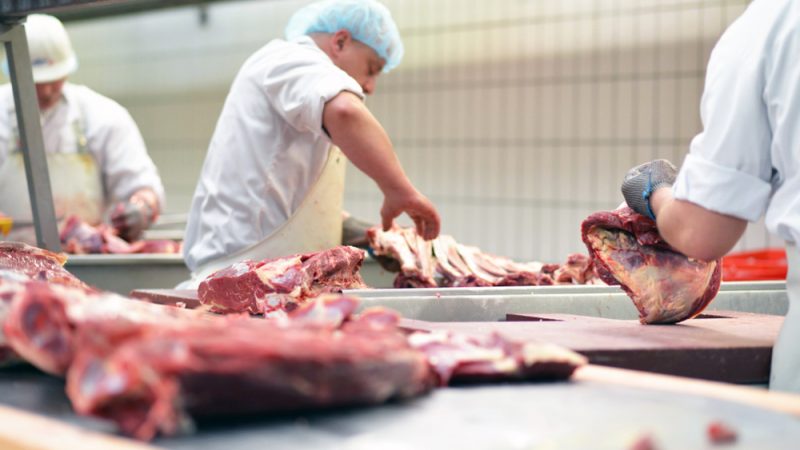
Agricultural News
Oklahoma's Small Meat Processors- OSU's Rodney Holcomb Looks Ahead
Fri, 15 Oct 2021 15:42:58 EDT
 There is a push for diversity among meat processing facilities in the U.S. for more than one reason. In recent years, is has become evident that funneling most of the nation's livestock through a handful of large meat processing facilities makes for a fragile protein supply chain. At the same time, consumers are looking for locally raised and processed products.
There is a push for diversity among meat processing facilities in the U.S. for more than one reason. In recent years, is has become evident that funneling most of the nation's livestock through a handful of large meat processing facilities makes for a fragile protein supply chain. At the same time, consumers are looking for locally raised and processed products.
At this year's Rural Economic Outlook Conference at Oklahoma State University, Dr. Rodney Holcomb, agricultural economics professor at OSU, told Radio Oklahoma's own KC Sheperd that in Oklahoma, the local food movement had small, local processing facilities backed up before COVID crippled processing capacity at the large plants.
"Most small plants were backed up three to six months, then all of a sudden COVID hits," Holcomb said. "Then we go to a year, year-and-a-half, even two years out just to book a kill date for a steer."
Although slaughter appointments are not being booked so far out, we are still years away from capacity among small processors making a full recovery, according to Holcomb. Employee numbers are just not there he added.
"We lost the labor," Holcomb said. "Either folks got sick and could not work or for health reasons they decided to stay home whatever the case may be, that put us even deeper in the hole."
This summer, the Oklahoma Department of Agriculture Food and Forestry received $10 million in grants to increase Oklahoma's meat processing capacity. As of Sept., funds were divided among 40 locations in Oklahoma.
Keep in mind, not all processing facilities are the same, Holcomb said. Some facilities do not offer slaughter services, they simply buy cuts of meat and make their products. Holcomb said those facilities are classified as retail exempt.
"When most people think of those small meat processing plants, they think of the ones who (offer slaughter services)," Holcomb said. "With those, you have three kinds: custom exempt, state inspected and
He said custom exempt facilities work directly with an individual who brings an animal to be butchered for their personal use; the meat is not to be sold. State inspected processing facilities is what it sounds like: ODAFF runs the inspection system and those standards are equal to or better than federal standards, according to Holcomb. The biggest difference between state inspected and federally inspected plants is that meat coming out of a state-inspected plant cannot be sold outside of Oklahoma, he added.
According to Holcomb, the meat processing industry began to change starting in the 1980s, up to 2000. New technology paved the way for large, efficient facilities to mass-produce products, he said.
"There were a lot of reasons," Holcomb said. "All of a sudden, we do not have butcher shops in supermarkets anymore."
Holcomb said at the same time larger facilities were coming online, disinterest from an upcoming generation of family butchers saw children leave in pursuit of other careers.
"You also had food safety standards really ramp up in the late 1990s," Holcomb said. "We had a lot of plants that said, 'I do not want to have to revise the way I operate, I do not want to modify my plant or hire another person to be my food safety coordinator that is all just more money coming out of my pocket.'"
As fate would have it, after all those local processing facilities shut their doors, the local food movement kicked off in the early 2000s, he added.
Hit the LISTEN BAR below to hear KC's conversation with Dr. Randy Holcomb with OSU, as they talk about some programs available to help meat processors come online or expand in Oklahoma, the need for professional butchers and more.
WebReadyTM Powered by WireReady® NSI
Top Agricultural News
More Headlines...




